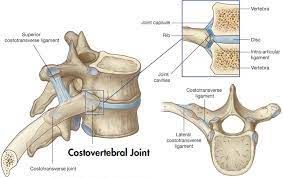Facet Joint Irritation
Facet joints, anatomically known as the zygapophyseal joints, form connections from the arch of one vertebrae to an adjacent vertebrae and is surrounded by a synvival membrane which contains synovial fluid. While facet joints are a debated cause of spinal pain, each facet joint has a nerve supply from the medial branches from posterior primary rami (nerves) and it is thought that as they have a nerve supply they can also be a source of nociception (danger signals).
Facet joint irritation can be idiopathic, can be a result of repetitive movements into a certain direction (for example repetitive extension or sideways bending) or through a result of trauma.
Symptoms
People who are experiencing facet joint irritation may report:
• Local pressure pain at level of affected joint
• Increased tone and tension in surrounding musculature
• Decreased range of movement
• Stiffness
• Discomfort with prolonged sitting
Diagnosis
Following a thorough history, a physical examination will take place which typically examines:
• Observation of increased tone on the affected side
• Active and passive range of movement of the thoracic spine
• Tenderness on palpation at the level of the affected facet joint
• Sensory examination to rule out any disc / neural involvement
• Muscle strength testing
How can Physiotherapy help?
Physiotherapy can help facet joint irritation in a number of ways:
• Advice and education
• Mobilisation and manipulation
• Soft tissue massage
• Pain management
• Acupuncture
• Home exercise programme
• Taping
• Graded return to sport / physical activity










